Trivia Browser
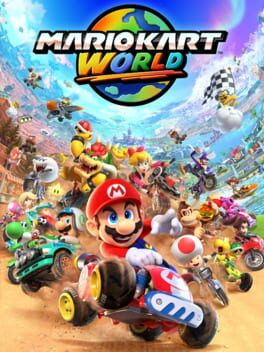
▲
1
▼
While hovering over Yoshi or any of his outfit variations on the character select screen in any mode, there is a chance that he will hum Totaka's Song, a short melody written by veteran Nintendo composer and Yoshi voice actor Kazumi Totaka that has been inserted into most of the games he worked on. Although Totaka was not part of the music team for Mario Kart World, he is credited for reprising his role as Yoshi.
Totaka's Song Easter egg footage:
https://www.youtube.com/watch?v=XJSxuL3wmag
https://www.youtube.com/watch?v=IXOHWc9zKLc
https://www.youtube.com/watch?v=Xj8lnvyOZRA
Mario Kart World credits:
https://www.youtube.com/watch?v=z_I_O5M-XkQ#t=259s
https://www.youtube.com/watch?v=XJSxuL3wmag
https://www.youtube.com/watch?v=IXOHWc9zKLc
https://www.youtube.com/watch?v=Xj8lnvyOZRA
Mario Kart World credits:
https://www.youtube.com/watch?v=z_I_O5M-XkQ#t=259s
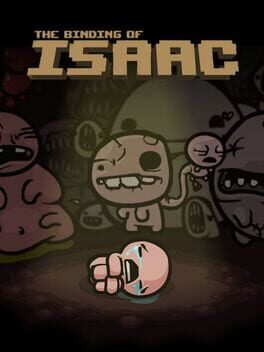
▲
1
▼
 The designs of the passive item Infamy and the boss Mask of Infamy are a reference to Carmilla from Castlevania II: Simon's Quest.
The designs of the passive item Infamy and the boss Mask of Infamy are a reference to Carmilla from Castlevania II: Simon's Quest.
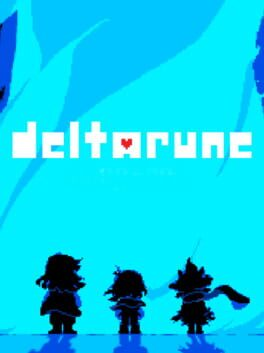
▲
1
▼
 Within the data for Chapter 4 are unused sprites depicting Susie playing a handheld video game while hanging out with Noelle. Concept art for this was shown off in a tweet by Toby Fox in 2022, alongside artwork of two other character interactions. Notably, the Susie and Noelle scenario is the only one shown in the tweet that isn't featured in the final game.
Within the data for Chapter 4 are unused sprites depicting Susie playing a handheld video game while hanging out with Noelle. Concept art for this was shown off in a tweet by Toby Fox in 2022, alongside artwork of two other character interactions. Notably, the Susie and Noelle scenario is the only one shown in the tweet that isn't featured in the final game.

This trivia has been marked as "Not Safe for Work".
It may not be appropriate for all visitors and definitely isn't appropriate for work or school environments.
Click here to unhide it.
It may not be appropriate for all visitors and definitely isn't appropriate for work or school environments.
Click here to unhide it.
▲
1
▼
Version 1.01A patch notes and player reactions:
https://x.com/UnderTale/status/1930946248720499114
Version 1.01C patch notes and player reactions:
https://x.com/UnderTale/status/1931980972851073184
The Cutting Room Floor article:
https://tcrf.net/Deltarune/Chapter_4#Version_1.01C
YouTube video comparing the initial and Version 1.01A animations:
https://www.youtube.com/watch?v=Ld3_bf8dPAE
YouTube video showcasing the Version 1.01C animation:
https://www.youtube.com/watch?v=JLUZlbKhjsg
Merriam Webster definition of "deflower":
https://www.merriam-webster.com/dictionary/deflower
https://x.com/UnderTale/status/1930946248720499114
Version 1.01C patch notes and player reactions:
https://x.com/UnderTale/status/1931980972851073184
The Cutting Room Floor article:
https://tcrf.net/Deltarune/Chapter_4#Version_1.01C
YouTube video comparing the initial and Version 1.01A animations:
https://www.youtube.com/watch?v=Ld3_bf8dPAE
YouTube video showcasing the Version 1.01C animation:
https://www.youtube.com/watch?v=JLUZlbKhjsg
Merriam Webster definition of "deflower":
https://www.merriam-webster.com/dictionary/deflower

▲
1
▼
 At 12:00 Noon every day, Lord British, who was modelled after series creator Richard Garriott, will leave his throne room and walk out to its doorway, with a gold plaque hanging over it that reads "The Throne Room of Lord British". If you click on this plaque when he is directly underneath it, it will fall on his head and kill him. Afterwards, one of the party members will declare: "He's dead, Avatar! Yancey-Hausman will pay!" This quote and the way he is killed are a reference to an incident that occurred during the game's development. While checking on some employees during a smoke break, Garriott was struck by a large 8-pound magnet that fell from a security door in Origin Systems' offices, and he was hospitalized with a concussion. Yancey-Hausman was a Texan real estate firm who owned the offices at the time. Before showing the finished Easter egg to Garriott, the development team gifted him a hard hat adorned with a picture of a goose saying "Ankh Ankh", a pun referencing the recurring symbol in the Ultima series.
At 12:00 Noon every day, Lord British, who was modelled after series creator Richard Garriott, will leave his throne room and walk out to its doorway, with a gold plaque hanging over it that reads "The Throne Room of Lord British". If you click on this plaque when he is directly underneath it, it will fall on his head and kill him. Afterwards, one of the party members will declare: "He's dead, Avatar! Yancey-Hausman will pay!" This quote and the way he is killed are a reference to an incident that occurred during the game's development. While checking on some employees during a smoke break, Garriott was struck by a large 8-pound magnet that fell from a security door in Origin Systems' offices, and he was hospitalized with a concussion. Yancey-Hausman was a Texan real estate firm who owned the offices at the time. Before showing the finished Easter egg to Garriott, the development team gifted him a hard hat adorned with a picture of a goose saying "Ankh Ankh", a pun referencing the recurring symbol in the Ultima series.
Easter egg footage:
https://www.youtube.com/watch?v=hPUYy4TdTtA
Explanation of the magnet incident, including photos of Richard Garriott holding the magnet that fell on his head and wearing the hard hat:
https://gigi.nullneuron.net/ultima/u7bg/u7fun.killlb.php
Houston, Texas Northwest Chamber of Commerce member page for Yancey-Hausman:
https://members.houstonnwchamber.org/list/member/yancey-hausman-commercial-real-estate-services-1656
https://www.youtube.com/watch?v=hPUYy4TdTtA
Explanation of the magnet incident, including photos of Richard Garriott holding the magnet that fell on his head and wearing the hard hat:
https://gigi.nullneuron.net/ultima/u7bg/u7fun.killlb.php
Houston, Texas Northwest Chamber of Commerce member page for Yancey-Hausman:
https://members.houstonnwchamber.org/list/member/yancey-hausman-commercial-real-estate-services-1656

subdirectory_arrow_right Divinity (Franchise)
▲
1
▼
According to Larian Studios CEO Swen Vincke, Ultima VII: The Black Gate is his favorite RPG, and it had a life-long influence on the development of the Divinity series and Baldur's Gate 3. Amidst the increasing popularity of the Diablo series, he felt that he needed to carry the baton for the environmental interactivity, non-linear gameplay, and dialogue/party reactions featured in Ultima VII that had otherwise been neglected or abandoned in other RPGs at the time.
Franchise: Mario
▲
4
▼
The Japanese name for the recurring Mario series enemy Dry Bones is "Karon" ("カロン"), which is derived from "karakara" ("からから"), a Japanese ideophone that can be used as an adverb for clattering or rattling, or as an adjective meaning "dry". While one would presume that the English name "Dry Bones" was derived from that, it has instead been theorized by some that the name could have been taken from an episode in the Book of Ezekiel in the Hebrew Bible and Christian Old Testament. In Ezekiel 37:1–14, the titular prophet describes an event where God leads him to a valley full of skeletons, referred to as "dry bones" in multiple English translations of the passage. Ezekiel then restores them to life by preaching to them, with the book stating:
Although Dry Bones in the Mario series don't regain their flesh, they otherwise bear similarities to the Biblical prophecy in that they are undead, skeletal Koopa Troopas that can reform moments after being stomped on while making a rattling sound. Despite this, it's unknown if Nintendo has ever officially explained the origins of its English name, or intended these similarities in the enemy's design.
"A sound started up, as I was prophesying, rattling like thunder. The bones came together, bone joining to bone. As I watched, sinews appeared on them, flesh grew over them, skin covered them on top, but there was no breath in them."
Although Dry Bones in the Mario series don't regain their flesh, they otherwise bear similarities to the Biblical prophecy in that they are undead, skeletal Koopa Troopas that can reform moments after being stomped on while making a rattling sound. Despite this, it's unknown if Nintendo has ever officially explained the origins of its English name, or intended these similarities in the enemy's design.
Super Mario Bros. 3 Japanese manual (page 40 in the manual):
https://www.nintendo.co.jp/clv/manuals/ja/pdf/CLV-P-HAACJ.pdf
Cambridge Dictionary entry:
https://dictionary.cambridge.org/ja/dictionary/japanese-english/からから
DidYouKnowGaming video:
https://www.youtube.com/watch?v=l4nbjX4iB18
Ezekiel 37 (Hebrew text and English translation from Hasidic Jewish website Chabad):
https://www.chabad.org/library/bible_cdo/aid/16135
Ezekial 37:1–14 (Christian King James Version, and New American Bible Revised Edition translations):
https://www.biblegateway.com/passage/?search=Ezekiel%2037%3A1-14&version=KJV
https://www.biblegateway.com/passage/?search=Ezekiel%2037%3A1-14&version=NABRE
Christian translation comparisons of Ezekiel 37:2 and Ezekial 37:4, where the phrase "dry bones" appears (depending on the edition):
https://www.biblegateway.com/verse/en/Ezekiel%2037:2
https://www.biblegateway.com/verse/en/Ezekiel%2037%3A4
https://www.nintendo.co.jp/clv/manuals/ja/pdf/CLV-P-HAACJ.pdf
Cambridge Dictionary entry:
https://dictionary.cambridge.org/ja/dictionary/japanese-english/からから
DidYouKnowGaming video:
https://www.youtube.com/watch?v=l4nbjX4iB18
Ezekiel 37 (Hebrew text and English translation from Hasidic Jewish website Chabad):
https://www.chabad.org/library/bible_cdo/aid/16135
Ezekial 37:1–14 (Christian King James Version, and New American Bible Revised Edition translations):
https://www.biblegateway.com/passage/?search=Ezekiel%2037%3A1-14&version=KJV
https://www.biblegateway.com/passage/?search=Ezekiel%2037%3A1-14&version=NABRE
Christian translation comparisons of Ezekiel 37:2 and Ezekial 37:4, where the phrase "dry bones" appears (depending on the edition):
https://www.biblegateway.com/verse/en/Ezekiel%2037:2
https://www.biblegateway.com/verse/en/Ezekiel%2037%3A4
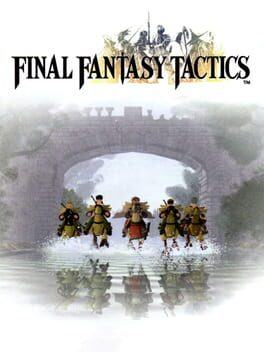
▲
5
▼
 In October 2020, a Facebook account known as "Leftist Gamer Memes" posted a meme depicting Wiefgraf saying left-wing rhetoric in a similar vein to the anti-capitalist themes in Final Fantasy Tactics:
In October 2020, a Facebook account known as "Leftist Gamer Memes" posted a meme depicting Wiefgraf saying left-wing rhetoric in a similar vein to the anti-capitalist themes in Final Fantasy Tactics:"If the penalty for a crime is a fine, then that law only exists for the lower class."
This meme would be shared so much that other users and internet sources began to mistakenly cite it as a real quote from the game. The game's writer and director Yasumi Matsuno eventually discovered the meme and clarified it was a fake quote, but nonetheless saw it as "something I would have written." He felt the meme's appeal stemmed from people dropping the game after its first chapter and not fully seeing the rest of Wiefgraf's character, stating:
"Wiegraf laments the disparity in society and wants to reform the unequal world. Therefore, he won't make fun of the lower classes himself. However, he may be sarcastic about those who claim that an unequal society is preferable. I think Algus is the most suitable person to use this [quote] because he endorses an unequal society."
Original Facebook post:
https://www.facebook.com/leftistgamermemes/posts/pfbid0BEUnVJewTqPFGGUzaPXBMFHSd1QkrH9mK43U4GJjJ4EspREKUQ1GjAuTB4Yuvr1jl
Yasumi Matsuno tweets:
https://x.com/YasumiMatsuno/status/1931205193934545292
https://x.com/YasumiMatsuno/status/1931208184452022498
https://x.com/YasumiMatsuno/status/1931222649994416414
Aftermath articles:
https://aftermath.site/penality-crime-fine-final-fantasy-tactics
https://aftermath.site/how-a-leftist-meme-account-accidentally-fooled-everyone-into-believing-a-famous-quote-came-from-final-fantasy-tactics
Time Extension article:
https://www.timeextension.com/news/2025/06/final-fantasy-tactics-writer-yasumi-matsuno-just-found-out-about-the-games-most-famous-false-quote
Kotaku article about game re-release:
https://kotaku.com/final-fantasy-tactics-remaster-yasumi-matsuno-political-1851783744
https://www.facebook.com/leftistgamermemes/posts/pfbid0BEUnVJewTqPFGGUzaPXBMFHSd1QkrH9mK43U4GJjJ4EspREKUQ1GjAuTB4Yuvr1jl
Yasumi Matsuno tweets:
https://x.com/YasumiMatsuno/status/1931205193934545292
https://x.com/YasumiMatsuno/status/1931208184452022498
https://x.com/YasumiMatsuno/status/1931222649994416414
Aftermath articles:
https://aftermath.site/penality-crime-fine-final-fantasy-tactics
https://aftermath.site/how-a-leftist-meme-account-accidentally-fooled-everyone-into-believing-a-famous-quote-came-from-final-fantasy-tactics
Time Extension article:
https://www.timeextension.com/news/2025/06/final-fantasy-tactics-writer-yasumi-matsuno-just-found-out-about-the-games-most-famous-false-quote
Kotaku article about game re-release:
https://kotaku.com/final-fantasy-tactics-remaster-yasumi-matsuno-political-1851783744
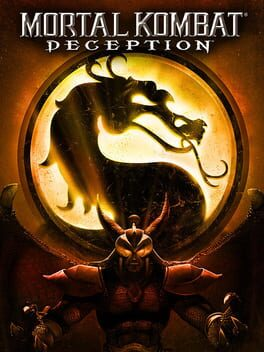
▲
1
▼
In the game files, some debuting characters and arenas are referred to with their internal production names:
• The Falling Cliffs stage is named "kollapsing_kliffs"
• The Nethership Interior stage is named "netherbelly"
• Havik is named "skab"
• Shujinko is named "monk"
• Monster is named "freak"
• Darrius is named "cassius"
• The Falling Cliffs stage is named "kollapsing_kliffs"
• The Nethership Interior stage is named "netherbelly"
• Havik is named "skab"
• Shujinko is named "monk"
• Monster is named "freak"
• Darrius is named "cassius"
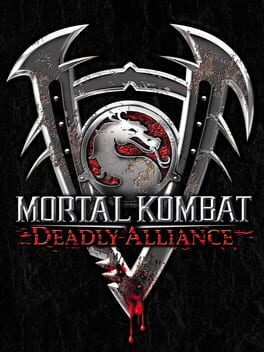
▲
1
▼
There are three unused Announcer voice clips found in the game's code, one of which announces the name of the non-playable sub-boss Moloch. This was found grouped with character selection screen data, suggesting that he was once planned to be included as an unlockable playable character. There are also two humorous voice clips shouting "Fat!" and "Fantastico!" that may have been recorded as inside jokes, but their intended purpose remains unknown.
Platform: Nintendo Switch 2
▲
2
▼
According to an April 2025 interview for Nintendo's Ask the Developers column, the decision to design the Nintendo Switch 2 as a more powerful version of the original Nintendo Switch was due to a desire to give developers greater creative freedom with the Switch family's base concepts. According to Takuhiro Dohta, who directed the console's development:
Kouichi Kawamoto, the producer for the Switch 2's development, further explained the decision to move away from the Blue Ocean approach that defined Nintendo's hardware during the presidency of Satoru Iwata, in which systems would focus on unconventional control schemes that would permit them to stand out from competitors. He claimed that the idea was an expansion upon Nintendo's internal philosophy with the original Switch, in which they prioritized designing accessible features that could be used in any game for the console "rather than tasking software developers to create gameplay experiences that incorporate the hardware's unique features." Kawamoto stated that games such as Ring Fit Adventure demonstrated the viability of moving unconventional control schemes to accessories rather than the base console, while Dohta called the Switch 2 an amalgamation of the best features from previous Nintendo systems.
"[...] as software developers continue to take on [the challenges of evolving hardware], their technical capabilities improve and ideas expand, and then what they hope to do ends up surpassing what the hardware's processing power can handle. Hardware with an expanded processing capability is a blessing for software developers who want to challenge themselves to create new gameplay experiences that are unimaginable today."
Kouichi Kawamoto, the producer for the Switch 2's development, further explained the decision to move away from the Blue Ocean approach that defined Nintendo's hardware during the presidency of Satoru Iwata, in which systems would focus on unconventional control schemes that would permit them to stand out from competitors. He claimed that the idea was an expansion upon Nintendo's internal philosophy with the original Switch, in which they prioritized designing accessible features that could be used in any game for the console "rather than tasking software developers to create gameplay experiences that incorporate the hardware's unique features." Kawamoto stated that games such as Ring Fit Adventure demonstrated the viability of moving unconventional control schemes to accessories rather than the base console, while Dohta called the Switch 2 an amalgamation of the best features from previous Nintendo systems.
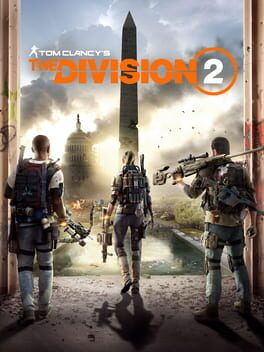
▲
1
▼
 In the Space Administration HQ mission, a set of large screens in the satellite control room display a window of code showing how hackers took down the NOA's main terminal. They used the real-life Nmap network scanner tool and executed a script called "sshpwn", which uses a security exploit named "SSHv1 CRC32". This is a reference to a scene from the 2003 film "The Matrix Reloaded", where Trinity uses Nmap to execute a fictional self-written script called "sshnuke" to take down a power grid with the SSHv1 CRC32 exploit. While the sshnuke script was created for the movie, SSHv1 CRC32 is a real vulnerability for Secure Shell Protocol version 1.0 discovered in February 2001.
In the Space Administration HQ mission, a set of large screens in the satellite control room display a window of code showing how hackers took down the NOA's main terminal. They used the real-life Nmap network scanner tool and executed a script called "sshpwn", which uses a security exploit named "SSHv1 CRC32". This is a reference to a scene from the 2003 film "The Matrix Reloaded", where Trinity uses Nmap to execute a fictional self-written script called "sshnuke" to take down a power grid with the SSHv1 CRC32 exploit. While the sshnuke script was created for the movie, SSHv1 CRC32 is a real vulnerability for Secure Shell Protocol version 1.0 discovered in February 2001.
Tom Clancy's The Division 2 gameplay:
https://www.youtube.com/watch?v=En4q_Xa318A#t=905s
The Matrix Reloaded scene:
https://www.youtube.com/watch?v=0PxTAn4g20U
Carnegie Mellon University Software Engineering Institute database:
https://www.kb.cert.org/vuls/id/945216
The Register article:
https://www.theregister.com/2003/05/16/matrix_sequel_has_hacker_cred/
BBC News article:
http://news.bbc.co.uk/2/hi/technology/3039329.stm
https://www.youtube.com/watch?v=En4q_Xa318A#t=905s
The Matrix Reloaded scene:
https://www.youtube.com/watch?v=0PxTAn4g20U
Carnegie Mellon University Software Engineering Institute database:
https://www.kb.cert.org/vuls/id/945216
The Register article:
https://www.theregister.com/2003/05/16/matrix_sequel_has_hacker_cred/
BBC News article:
http://news.bbc.co.uk/2/hi/technology/3039329.stm

▲
3
▼
 On May 15, 2025, a graphic artist named Antireal accused Bungie of stealing digital artwork originally uploaded to her Twitter account in 2017 for use in Marathon, posting three comparison images including an in-game texture with a partly erased artist signature. This, coming after multiple plagiarism controversies in Destiny 2 and Bungie's ineffectiveness in addressing the practice, drew widespread criticism from players. The same day, the game's development team issued a response confirming that a former Bungie employee included the designs on a texture sheet, and that they had reached out to Antireal to negotiate how to resolve the controversy. During a livestream the following day, game director Joe Ziegler and art director Joseph Cross asserted that the plagiarism was only restricted to certain in-game assets, and that they were conducting a full review to determine if any more were used without credit. It was pointed out that Cross and other Bungie employees had followed her Twitter account for "a few years" before this controversy; Antireal claimed she had no prior communication with them. Around the same time, a 2024 tweet was rediscovered where she revealed that she had hidden references to "Loss", a 2007 four-panel strip from the webcomic "Ctrl+Alt+Del" that became a meme, in her illustrations as early as 2018. Another user replied with an in-game Marathon screenshot of a whiteboard and a Loss meme drawn in marker, but Antireal did not bring this up in her original accusations and has yet to confirm or deny that this version of Loss was the one she used.
On May 15, 2025, a graphic artist named Antireal accused Bungie of stealing digital artwork originally uploaded to her Twitter account in 2017 for use in Marathon, posting three comparison images including an in-game texture with a partly erased artist signature. This, coming after multiple plagiarism controversies in Destiny 2 and Bungie's ineffectiveness in addressing the practice, drew widespread criticism from players. The same day, the game's development team issued a response confirming that a former Bungie employee included the designs on a texture sheet, and that they had reached out to Antireal to negotiate how to resolve the controversy. During a livestream the following day, game director Joe Ziegler and art director Joseph Cross asserted that the plagiarism was only restricted to certain in-game assets, and that they were conducting a full review to determine if any more were used without credit. It was pointed out that Cross and other Bungie employees had followed her Twitter account for "a few years" before this controversy; Antireal claimed she had no prior communication with them. Around the same time, a 2024 tweet was rediscovered where she revealed that she had hidden references to "Loss", a 2007 four-panel strip from the webcomic "Ctrl+Alt+Del" that became a meme, in her illustrations as early as 2018. Another user replied with an in-game Marathon screenshot of a whiteboard and a Loss meme drawn in marker, but Antireal did not bring this up in her original accusations and has yet to confirm or deny that this version of Loss was the one she used.
Antireal accusation tweets:
https://x.com/4nt1r34l/status/1923067988871147605
https://x.com/4nt1r34l/status/1923176362359103900
https://x.com/4nt1r34l/status/1923083432713650246
https://bsky.app/profile/antire.al/post/3lpa4gamtzs2l
Original artwork tweets:
https://x.com/4nt1r34l/status/886433739634561024
https://x.com/4nt1r34l/status/913204358485037067
https://x.com/4nt1r34l/status/913546234723487745
https://x.com/4nt1r34l/status/909271763061583872
Additional comparison:
https://x.com/TauCetiGG/status/1923160771279663590
Loss tweets and artist archive:
https://x.com/4nt1r34l/status/1798098416314265905
https://x.com/Augm3nt3_1/status/1923120302537539763
https://antireal.info/archive
Marathon developer statements and livestream:
https://x.com/MarathonDevTeam/status/1923217324384903262
https://bsky.app/profile/marathonteam.bungie.net/post/3lpb36jqb5c22
https://www.youtube.com/watch?v=qORBkGmHaoQ
Esports Insider article:
https://esportsinsider.com/bungie-marathon-controversy
Game Developer article:
https://www.gamedeveloper.com/art/bungie-apologizes-for-stolen-art-assets-in-marathon-alpha
PC Gamer article:
https://www.pcgamer.com/games/fps/haunted-looking-art-director-livestreams-apology-for-marathon-theft-scandal-but-chat-is-merciless-would-write-an-original-comment-but-i-dont-see-any-good-ones-to-plagarize/
Forbes article:
https://www.forbes.com/sites/paultassi/2025/05/16/bungie-stealing-marathon-art-is-probably-the-last-straw/
GameSpot article:
https://www.gamespot.com/articles/bungie-responds-to-marathon-art-theft-claims/1100-6531591/
https://x.com/4nt1r34l/status/1923067988871147605
https://x.com/4nt1r34l/status/1923176362359103900
https://x.com/4nt1r34l/status/1923083432713650246
https://bsky.app/profile/antire.al/post/3lpa4gamtzs2l
Original artwork tweets:
https://x.com/4nt1r34l/status/886433739634561024
https://x.com/4nt1r34l/status/913204358485037067
https://x.com/4nt1r34l/status/913546234723487745
https://x.com/4nt1r34l/status/909271763061583872
Additional comparison:
https://x.com/TauCetiGG/status/1923160771279663590
Loss tweets and artist archive:
https://x.com/4nt1r34l/status/1798098416314265905
https://x.com/Augm3nt3_1/status/1923120302537539763
https://antireal.info/archive
Marathon developer statements and livestream:
https://x.com/MarathonDevTeam/status/1923217324384903262
https://bsky.app/profile/marathonteam.bungie.net/post/3lpb36jqb5c22
https://www.youtube.com/watch?v=qORBkGmHaoQ
Esports Insider article:
https://esportsinsider.com/bungie-marathon-controversy
Game Developer article:
https://www.gamedeveloper.com/art/bungie-apologizes-for-stolen-art-assets-in-marathon-alpha
PC Gamer article:
https://www.pcgamer.com/games/fps/haunted-looking-art-director-livestreams-apology-for-marathon-theft-scandal-but-chat-is-merciless-would-write-an-original-comment-but-i-dont-see-any-good-ones-to-plagarize/
Forbes article:
https://www.forbes.com/sites/paultassi/2025/05/16/bungie-stealing-marathon-art-is-probably-the-last-straw/
GameSpot article:
https://www.gamespot.com/articles/bungie-responds-to-marathon-art-theft-claims/1100-6531591/

▲
1
▼
Although the DK Spaceport course is primarily based on the original arcade version of Donkey Kong, there are also a few elements of the course taken from the Game & Watch version of the game. Specifically, the starting banner is modelled after the Donkey Kong Game & Watch unit, and iconography based on the directional pad can be seen throughout the course.
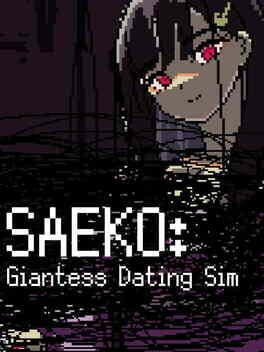
This trivia has been marked as "Not Safe for Work".
It may not be appropriate for all visitors and definitely isn't appropriate for work or school environments.
Click here to unhide it.
It may not be appropriate for all visitors and definitely isn't appropriate for work or school environments.
Click here to unhide it.
▲
2
▼
Interviews with kyp (note that these interviews are in Japanese):
https://www.kamoyanagi.net/post/interview_07
https://www.gamer.ne.jp/news/202309220044/
English article about the game:
https://www.vice.com/en/article/this-giantess-dating-sim-has-consumed-my-interest-it-finally-has-a-release-date/
Japanese article about the game:
https://automaton-media.com/articles/newsjp/saeko-giantess-dating-sim-20250501-337180/
https://www.kamoyanagi.net/post/interview_07
https://www.gamer.ne.jp/news/202309220044/
English article about the game:
https://www.vice.com/en/article/this-giantess-dating-sim-has-consumed-my-interest-it-finally-has-a-release-date/
Japanese article about the game:
https://automaton-media.com/articles/newsjp/saeko-giantess-dating-sim-20250501-337180/

This trivia has been marked as "Not Safe for Work".
It may not be appropriate for all visitors and definitely isn't appropriate for work or school environments.
Click here to unhide it.
It may not be appropriate for all visitors and definitely isn't appropriate for work or school environments.
Click here to unhide it.
▲
1
▼
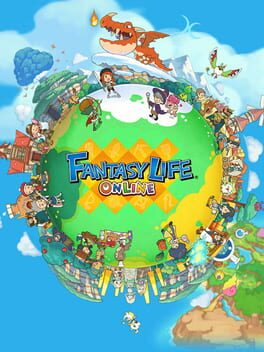
▲
1
▼
Fantasy Life Online was originally announced in April 2015 as "Fantasy Life 2: Two Moons and the Village of God". However, the game suffered numerous delays, eventually being released as Fantasy Life Online in 2018. According to a statement from Level-5, the reason why the name was changed was so that new players could view the game as a new title in the series rather than as a sequel to the first game.
Initial announcement:
https://web.archive.org/web/20150413150836/http://www.madeforgaming.com/fantasy-life-2-landing-smartphones-2015/
Articles about delays:
https://www.siliconera.com/fantasy-life-2-delayed-until-2016-will-get-a-beta-phase-this-winter/
http://www.siliconera.com/2016/03/10/fantasy-life-2-beta-delayed-spring-2016/
http://www.siliconera.com/2017/06/13/fantasy-life-online-delayed-april-2017-sometime-2017/
http://www.siliconera.com/2017/12/22/fantasy-life-online-delayed-yet-2017-window-spring-2018/
http://www.siliconera.com/2018/05/11/fantasy-life-online-delayed-yet-spring-2018-summer-2018/
Article about name change:
https://www.siliconera.com/fantasy-life-2-smartphone-now-called-fantasy-life-online/
Article about the game's launch:
https://www.siliconera.com/fantasy-life-online-reaches-2-million-downloads/
https://web.archive.org/web/20150413150836/http://www.madeforgaming.com/fantasy-life-2-landing-smartphones-2015/
Articles about delays:
https://www.siliconera.com/fantasy-life-2-delayed-until-2016-will-get-a-beta-phase-this-winter/
http://www.siliconera.com/2016/03/10/fantasy-life-2-beta-delayed-spring-2016/
http://www.siliconera.com/2017/06/13/fantasy-life-online-delayed-april-2017-sometime-2017/
http://www.siliconera.com/2017/12/22/fantasy-life-online-delayed-yet-2017-window-spring-2018/
http://www.siliconera.com/2018/05/11/fantasy-life-online-delayed-yet-spring-2018-summer-2018/
Article about name change:
https://www.siliconera.com/fantasy-life-2-smartphone-now-called-fantasy-life-online/
Article about the game's launch:
https://www.siliconera.com/fantasy-life-online-reaches-2-million-downloads/
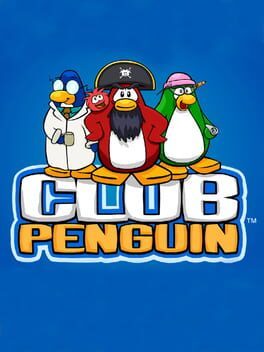
▲
3
▼
 Club Penguin and its developer were purchased by The Walt Disney Company in August 2007, but three months beforehand, reports had circulated that AOL and Sony were also competing to acquire them. Around the same time in June, the game held its first cross-promotional event with the Sony animated film Surf's Up, which also featured penguins. The content added was a surfing minigame and generic beach-themed areas and items that for the most part were already being planned as is, and did not implement Surf's Up characters into the game world. This came in stark contrast to the "takeovers" the game would do following the Disney buyout, which would often introduce non-penguin characters from other Disney properties into the game world. At the time of the Surf's Up promotion, the development team was apprehensive about crossover content, as they felt it would break the immersion of the game. A shell necklace was added as a wearable item during the promotion as an indirect reference to the necklace given to Cody by his idol Big Z in the film, but the team was adamant that it should be a generic item and not have not have the "Z" etched onto it.
Club Penguin and its developer were purchased by The Walt Disney Company in August 2007, but three months beforehand, reports had circulated that AOL and Sony were also competing to acquire them. Around the same time in June, the game held its first cross-promotional event with the Sony animated film Surf's Up, which also featured penguins. The content added was a surfing minigame and generic beach-themed areas and items that for the most part were already being planned as is, and did not implement Surf's Up characters into the game world. This came in stark contrast to the "takeovers" the game would do following the Disney buyout, which would often introduce non-penguin characters from other Disney properties into the game world. At the time of the Surf's Up promotion, the development team was apprehensive about crossover content, as they felt it would break the immersion of the game. A shell necklace was added as a wearable item during the promotion as an indirect reference to the necklace given to Cody by his idol Big Z in the film, but the team was adamant that it should be a generic item and not have not have the "Z" etched onto it.
Video on Club Penguin crossovers (skip to 3:30 for explanation of the Big Z necklace):
https://www.youtube.com/watch?v=94CT4WBUIWY#t=59s
The Hollywood Reporter article:
https://www.hollywoodreporter.com/business/business-news/penguin-waddles-disney-146186/
Engadget article:
https://www.engadget.com/2007-05-18-rumor-sony-wants-a-500-million-club-penguin.html
Disney acquisition:
https://thewaltdisneycompany.com/the-walt-disney-company-acquires-club-penguin/
https://www.youtube.com/watch?v=94CT4WBUIWY#t=59s
The Hollywood Reporter article:
https://www.hollywoodreporter.com/business/business-news/penguin-waddles-disney-146186/
Engadget article:
https://www.engadget.com/2007-05-18-rumor-sony-wants-a-500-million-club-penguin.html
Disney acquisition:
https://thewaltdisneycompany.com/the-walt-disney-company-acquires-club-penguin/
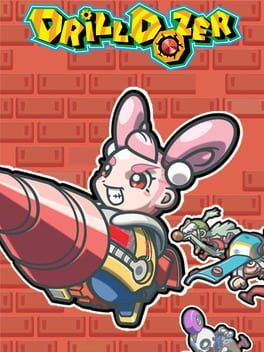
▲
1
▼
 In the files of Drill Dozer, a sprite can be found of an "S button", a button that has never existed on Nintendo platforms. It was most likely an attempt at creating a shorthand for Start or Select, as the circular shape of the button resembles the Game Boy Advance, Game Boy Advance SP, and Nintendo GameCube's Start buttons, and the written S was reused for the final game's Start button sprite seen when cracking locks. However, it does not resemble either the Game Boy Micro nor Nintendo DS' Start buttons, both of which were available by the time Drill Dozer released, which alongside "S" being shared as two button's acronyms likely led to the sprite being replaced with one that reads out the entire name of the button and resembles the Start and Select buttons seen on the Micro and DS.
In the files of Drill Dozer, a sprite can be found of an "S button", a button that has never existed on Nintendo platforms. It was most likely an attempt at creating a shorthand for Start or Select, as the circular shape of the button resembles the Game Boy Advance, Game Boy Advance SP, and Nintendo GameCube's Start buttons, and the written S was reused for the final game's Start button sprite seen when cracking locks. However, it does not resemble either the Game Boy Micro nor Nintendo DS' Start buttons, both of which were available by the time Drill Dozer released, which alongside "S" being shared as two button's acronyms likely led to the sprite being replaced with one that reads out the entire name of the button and resembles the Start and Select buttons seen on the Micro and DS.
The Cutting Room Floor article:
https://tcrf.net/Drill_Dozer
Start button in Drill Dozer:
https://www.youtube.com/watch?v=7XcOZQhg7QA#t=4686s
https://tcrf.net/Drill_Dozer
Start button in Drill Dozer:
https://www.youtube.com/watch?v=7XcOZQhg7QA#t=4686s
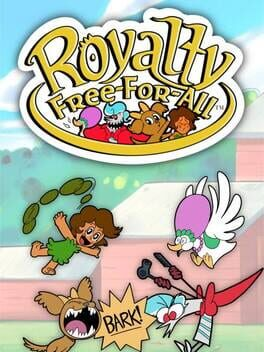
▲
2
▼
The game's creator Colin McIsaac has stated that it was inspired by his childhood experience reading the trophy gallery in the Super Smash Bros. series and going down various Wikipedia "rabbit holes" related to games and television series he enjoyed. He also wanted to pass on that experience through more easily accessible source material rather than the games featured in the Super Smash Bros. series:
"I want to be able to give kids a rabbit hole to go down about Sweeney Todd, Mother Goose, Lilith, rather than the trophy section of Smash Bros., where I spent a lot of my time. That feature hasn't appeared in Smash for nearly a decade, so it's really been fun trying to think of how to pass that experience on to the next generation of players."
